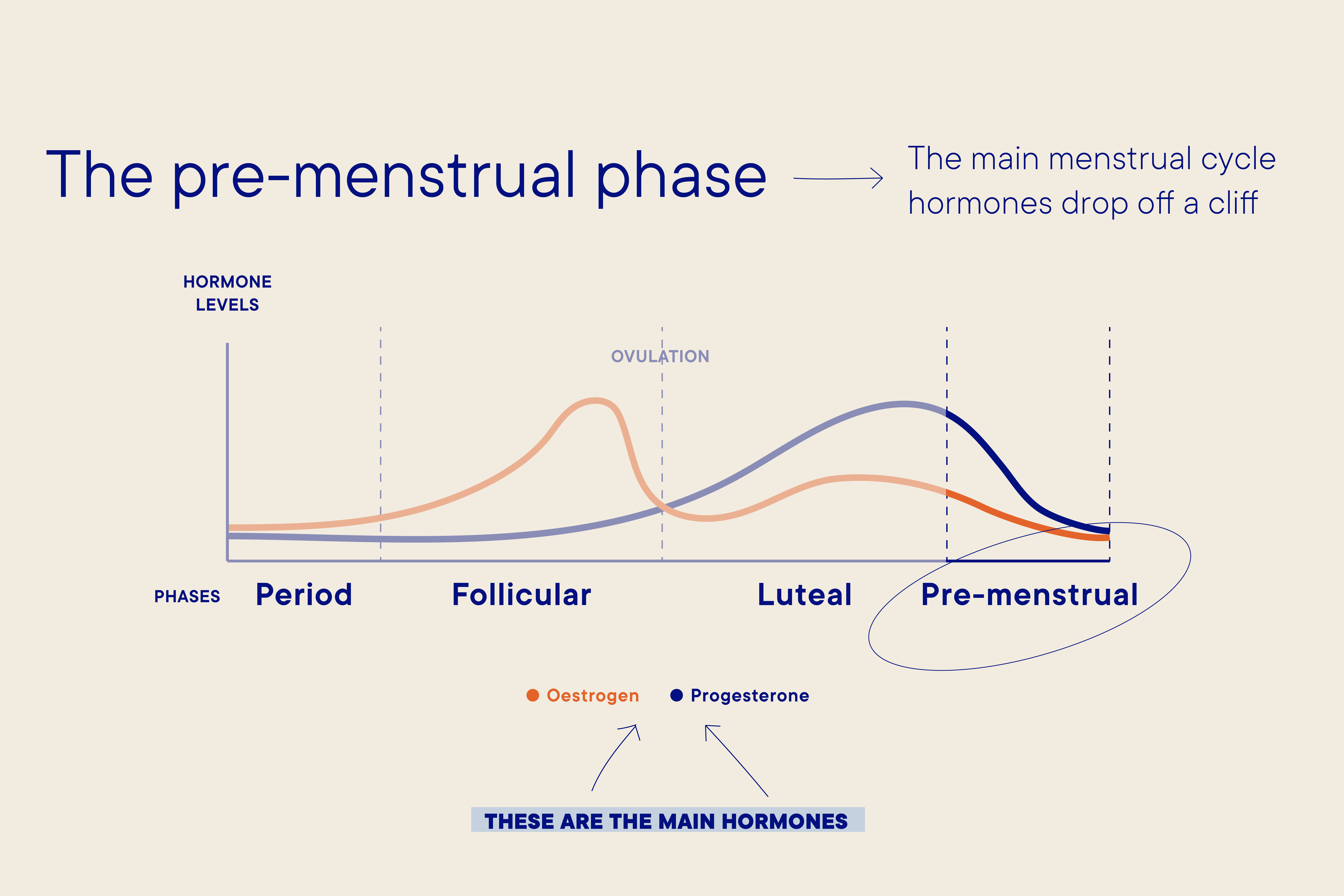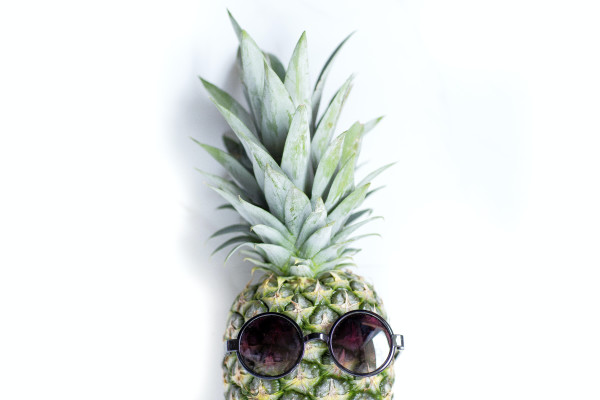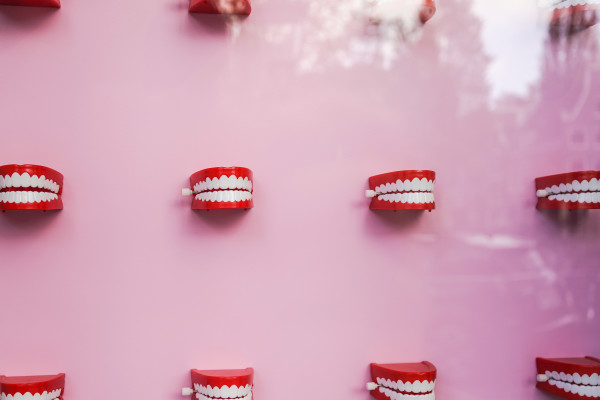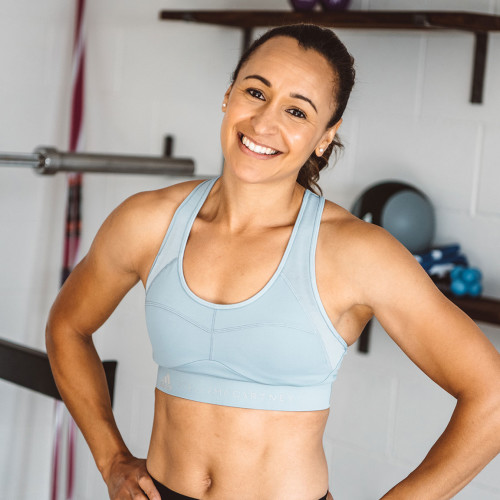Why do you get food cravings across the menstrual cycle?
2 years ago
Cycle syncing2 years ago
Cycle syncing
Ever wondered why your appetite ramps up mid-cycle or you have chocolate on the brain just before your period? Registered nutritional therapist, Angelique Panagos, and Jennis physiologist, Dr Emma Ross, explain all...
If you’ve ever found yourself staring into your kitchen cupboards with an insatiable urge to eat all the kit kats / biscuits / chocolate (delete as appropriate), it’s probably no surprise that your menstrual-cycle hormones might have something to do with it.
But which hormones have the most effect, when do they have the biggest impact and what can you do to control the cravings? Read on, as our favourite experts dish up the facts…
Food cravings can either include a strong desire for a specific food (give me all that chocolate) or an overwhelming urge for food more generally. These can be triggered by multiple factors, with the big ones being your environment (what you can smell and see), emotions and your body’s physical needs.
When we’re talking about environmental triggers, fast food companies know exactly what they’re doing when they spend billions of pounds on TV ads of juicy burgers and seemingly succulent chicken.
Research shows that when we see an advert for food, it triggers automatic eating behaviours, regardless of whether we’re craving the food being advertised or not. Smelling food has a similar effect.
Emotions can play a big part in your desire for certain foods, with sadness, stress, frustration and anxiety driving you to seek ‘comfort’ foods in a bid to trigger your pleasure sensors, which in turn make you feel better (cue: pizza, chips, chocolate).
We’re all biochemically individual and some of us are more sensitive to hormonal shifts than others
It’s also possible that some food cravings may be the body’s subconscious way of filling a nutritional need. For instance, chocolate cravings are often blamed on low magnesium levels, whereas cravings for meat or cheese are often seen as a sign of low iron or calcium levels.
Then there are the cravings related to what our menstrual cycle hormones are up to...
When it comes to your menstrual cycle, “food cravings tend to occur in the Luteal and Pre-Menstrual Phases of your menstrual cycle,” says Dr Emma Ross, Jennis Physiologist, “and can start anywhere from the mid-point of your cycle to when your period starts.

If you look at the hormone graph above, you can see that the Luteal phase is characterised by the additional presence of progesterone, while the Pre-Menstrual phase sees a drop-off in both oestrogen and progesterone.
“During the Luteal phase, progesterone is high, which can lead to blood sugar levels becoming unstable, which leads to cravings,” says Dr Emma.
“One of the other effects of progesterone is that it slows everything down, from your digestion to your energy levels and even the pace that energy in the form of fuel reaches our cells.”
“Because your body is amazing,” says Angelique Panagos, registered nutritional therapist , “it tries to find a work-around so that it can still get energy – and that’s when you start craving high-carbohydrate foods and sugary sweets to get that quick glucose fix.”

In your Pre-menstrual phase (see graph above), your oestrogen and progesterone levels continue to fall, until they hit their lowest point just before your period starts.
Oestrogen affects the parts of the brain that controls emotion, including the happy hormone serotonin, so as oestrogen drops off during this phase, so too does serotonin and the feel-good feeling it produces in the brain.
“To replace that feeling, we can seek out foods that give us a quick high like chocolate, brownies and biscuits,” says Angelique, “with a lot of it being the fact that we’re seeking out comfort at a time of the month when we’re feeling uncomfortable, anxious, and irritable. These types of food can make us feel good, but the more we have the more we want.”
We’re conditioned by the media to seek out comfort foods whenever we feel any pain and sadness
On top of that, Angelique believes social conditioning and the environmental triggers we mentioned above could play a part, too. “While we know our hormone fluctuations can play a big role, we can’t ignore the impact clever marketing and advertising has.”
“We’re conditioned by the media to seek out comfort foods whenever we feel any pain and sadness. Hormonal peaks and troughs aside, it’s almost as though we’re told that we should eat chocolate just before our period starts or a tub of ice cream when we’re feeling sad. Combine that with the changes that occur hormonally and we can end up reaching for chocolate on auto-pilot.”
It’s probably no surprise that sweet, high-fat foods, such as chocolate, pastries and ice cream, are right up there when it comes to cravings among women. But it’s not just the sweet stuff that we’re grabbing. According to a Brazilian study , salty foods are also popular with some women before their periods. For other women, it’s simply about eating ‘all’ the foods, with some studies showing overall increased calorie intake during these phases.
“Absolutely,” says Angelique. “We’re all biochemically individual and some of us are more sensitive to hormonal shifts than others, which means the strength of cravings can naturally differ, too. Other factors can also play a role, such as how much stress we’re under and how much/ little sleep we’re having.”
Anyone who has PMS, and particularly a severe form of PMS called pre-menstrual dysphoric disorder (PMDD), is much more likely to get food cravings for fatty and sugary foods before their period, according to Taiwanese researchers.
So, that’s why we experience food cravings across our cycles and what we tend to go for, but is there a way to control these cravings? According to Angelique, absolutely.
“Having good quality protein rich meals will not help only keep you satiated for longer but can also help with sustaining energy levels throughout the day,” says Angelique. “By focusing on balanced meals, you’re less likely to experience peaks and troughs in your blood sugar, which means you’ll start to crave the sweet stuff less.”
“To tap into this protein power, aim to have protein with every meal and introduce a protein-rich snack within 30 minutes after a workout to help repair your muscles,” advises Angelique.
Some food cravings may be the body’s subconscious way of filling a nutritional need
“Dietary fibre is really important as it helps with the blood sugar balance we mentioned above, plus it’s really important for liver health and keeping your gut regular.
“The reason we need to pay attention to our liver and gut is that they’re key to hormonal health and the process of eliminating spent oestrogen from your body, which in turn helps hormone regulation and improves the health of your menstrual cycle.
“A great source of fibre is veg, so pay attention to those lovely greens, such as broccoli, green leafy vegetables, Brussels sprouts, cabbage and kale. Not only are they fibre rich, but they have compounds shown to support the liver’s natural detoxification process.”
“Healthy fats are essential for many things in the body, like supporting healthy cells and building hormones, so they’re important to include across your whole cycle,” says Angelique. “Like protein, they help to keep you feeling fuller for longer and can help reduce those blood sugar spikes.”
“The key is to make sure you’re sticking to healthy fats as opposed to trans or hydrogenous fats, such as those that can be found in deep-fried foods, ready meals and processed food. Nuts and seeds are a great option, as are foods like avocado, olives, cold-pressed olive oil, oily fish, cold-pressed seed and nut oils.”
“When we have high-sugar foods and drinks, our blood sugar spikes and our body secretes the hormone insulin to help us balance our levels again.
“By bringing a more balanced approach to meals, it helps you have more balanced blood sugar levels, which will help to reduce food cravings, particularly in the Pre-menstrual Phase,” explains Angelique.
“There’s nothing wrong with a piece of chocolate now and then, but if you’re having lots of high-sugar and refined carbohydrate food and drink throughout the day, your blood sugar levels will be constantly peaking and troughing – and it’s this that can cause hormonal disruption and more symptoms.”
“Although making these changes might feel tough in the beginning, if you eat in a more balanced way consistently throughout your cycle – not just during your Pre-Menstrual Phase – and stick to it for several cycles, you should start noticing fewer food cravings, more energy and you’ll feel better across your whole cycle, too.”
“ Research has shown that training with weights can help to make our bodies more sensitive to insulin, so I recommend incorporating weight training or bodyweight resistance training into your sessions,” says Angelique.
“The reason for this is that with optimal insulin sensitivity we’re able to use blood glucose more effectively, which in turn gives our cells the glucose they need, helps to maintain our blood sugar at a healthy level and brings us back into balance.”
At Jennis , we’re all about helping women spot their symptom trends so they can be ambassadors of their own health, which is why watching your cravings can actually be a helpful indicator of what’s going on.
As an example, when we polled the Jennis team and community there were a couple of specific cravings that happen like clockwork, with a big proportion of those polled citing an insatiable desire for chocolate or tortilla chips kicking in exactly one day before their periods start.
With this in mind, it’s worth tracking which day of your cycle you experience cravings and what you are craving, as it may be a good indicator of mineral deficiencies or even simply that you might want to pack a pad or tampon in your bag tomorrow.
Find out more about Angelique Panagos and her eating for energy masterclass
 Cycle syncing
Cycle syncing Perimenopause
Perimenopause Perimenopause
Perimenopause Perimenopause
PerimenopauseSign up to learn everything you need to know about CycleMapping, plus how you can live better and feel better through optimising your fitness to you.
This website uses cookies to ensure you get the best experience on our website. Learn more

Sign up for the very latest news on women's fitness, health and hormones, plus be the first to receive exclusive offers and extras